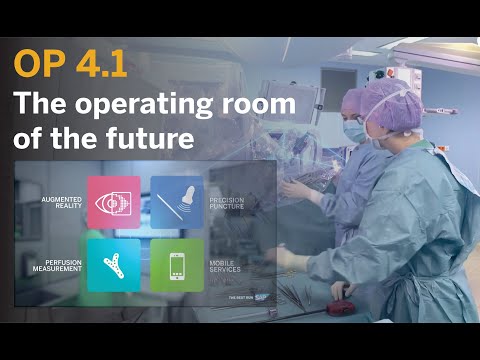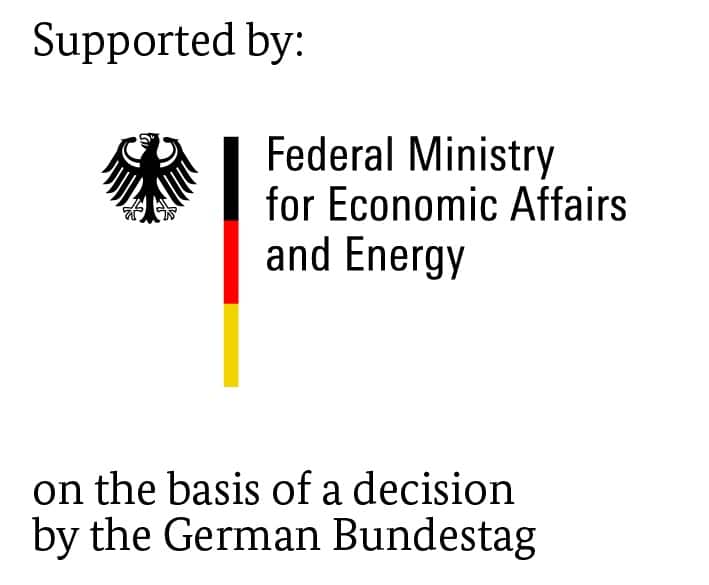While data-driven services are already widely used in various industries in the context of Industry 4.0, in healthcare the use of networked machines and data is still in its infancy.
The OP 4.1 technology and business platform aims to change this. The prototype shows how companies of all sizes could leverage its technical and commercial basis for the development, distribution, and simple implementation of innovative apps in the operating room environment.
Fitness apps, parking assistants, online banking via smartphone: Digitalization is almost everywhere today, but healthcare lags behind. The OP 4.1 project developed a prototype of an intelligent platform for the operating room of the future.
The project is part of the “Smart Services World II: Internet-Based Business Services” technology program, funded by the German Federal Ministry of Economic Affairs and Energy.
This article is part of the series
OP 4.1: The Operating Room of the Future
Despite all the groundbreaking innovations in the healthcare sector, isolated applications are often used. As a result, the full potential is not yet being exploited. The OP 4.1 project developed a prototype of an intelligent platform for the operating room of the future. The funded project is part of the technology program “Smart Service World II,” which is funded by the German Federal Ministry of Economics and Energy (BMWi). In this series, find out how the prototype enables the integration of data, technologies, and different sectors, while at the same time creating the balancing act between networking and solid business models that are the basis for any collaboration.
Medical Technology in Transition
The digitalization of medical technology is starting to advance. In recent years, surgical possibilities have expanded significantly due to the increasing linking of data. Technological development is making a constantly growing number of highly specialized devices available to surgery, such as high-resolution image and video assistance systems, software applications for surgical planning, or surgical robots for minimally invasive procedures. With these assistants, operations can be planned, performed, and replenished more precisely.
Millions of people are already benefiting from these developments, but it can also lead to increasing complexity in the operating room. Each new innovation means more information and possibilities. All devices produce a lot of different data during each operation. Additionally, there is information about each patient. While the information is currently stored, it is not immediately available to the surgeon in the operating room and it is therefore up to each surgeon to link and make sense of the data.
Prof. Dr. Markus Hohenfellner, Medical Director at the Department of Urology at the Heidelberg University Hospital and consortium leader of the project, sums it up: “As doctors, we cognitively store and fuse all this data alone in our heads and then we stand at the operating table and do the surgery.”
Among other things, the platform prototype makes it possible for a doctor to display various data on a dashboard during an operation in both a timely manner and a way that suits the respective situation. This is made possible by connecting applications, data sources, and devices. The OP 4.1 prototype is designed to provide the right data at the right time in the same way that a navigation system calculates and updates routes, traffic jams, detours, and fuel consumption.
“Meaningful linked data in medicine would mean, for example, that even as a surgeon, one would have a kind of guidance path so that one could get directly to the tumor while damaging as little healthy tissue as possible, or that one could identify the tumor as quickly as possible, even in places that are not externally visible,” explained Hohenfellner.
The intelligent combination of data enables operations to be carried out more precisely and patients to be treated faster and more gently. Hohenfellner is sure that the results obtained with the prototype will be successful.
Vision of the Operating Room of the Future
The vision of the operating room of the future is networked and integrates all data on an intelligent platform. A digital assistant provides the surgeon with the most important information and makes recommendations in real time. A robot maneuvers instruments precisely and quickly to the intended location and the surgeon can call up information by voice command. Apps on the platform combine all data in real time and project the tumor and the blood vessels in the tissue directly and three-dimensionally into the surgeon’s visual field. In the meantime, another program calculates the tissue’s resilience and suggests alternatives if necessary. The surgical team, nursing staff, and the surgical managers who coordinate all operations on a daily basis are always informed about the current status in the operating room via smartphone or tablet.
OP 4.1: Digital Operating Room is Getting Closer
In order to get closer to this goal, the Department of Urology at the Heidelberg University Hospital initiated the OP 4.1 project to develop a prototype digital platform. Cooperation partners include the German Cancer Research Center (DKFZ), KARL STORZ, mbits imaging, SAP, and Siemens Healthineers.
There are also many hopes connected with this, including bringing medical innovations to patients more quickly, treating patients more gently, more efficient processes in hospitals, and a reduction on the workload of medical staff.

However, the project also serves another goal. It intends to show how the market introduction of software-based innovations into clinical practice can be simplified and how their interaction with existing equipment can be enabled. For most software innovations, the barriers to market entry are currently still too high, which is why they do not make it into the operating room and daily clinical routine. Reasons are often the lack of access to the data of medical devices or the limited possibilities for professionally implemented sales and support.
Technology and Business Platform in One
At the beginning of the project, the Heidelberg University Hospital contacted SAP with a request for support. Michael Byczkowski, vice president of User Experience at SAP, explains: “Our main goal at SAP is to help partners and customers achieve their goals and be successful in the marketplace.”
A large part of the new innovations from research institutions and startups are software-based. The goal of the funding was therefore to develop a platform on which software can be easily developed, distributed, and installed. The basis for the OP 4.1 prototype is the Business Technology Platform of SAP Cloud Platform, with an OP 4.1 project-specific data protection concept.
The OP 4.1 platform prototype is open and expandable and is intended to simplify the implementation of innovative apps in practice. In addition to connecting software and devices, the prototype is also a business platform.
“In concrete terms, this means creating a business model for a multi-sided market that offers billing options and thus real commercial value-add,” Byczkowski explains. This should give manufacturers and developers an incentive to exchange data. “We are bringing the various device manufacturers, clinics and independent software developers in touch with each other so that they can exchange services with each other and also invoice accordingly.”
For device manufacturers, this business aspect of the platform is attractive. They can plan new and innovative business models and in future see exactly how their products interact and are used in everyday operating environments. New billing models are also imaginable. For example, a manufacturer can have not only his devices themselves billed, but also their use — pay-per-use. This creates completely new potential and possibilities for complementary use between different classes of equipment and software.
In order for this potential to unfold and arrive in the complex day-to-day operating room environment, a viable business model is needed that offers relevant added value for all parties involved.
“The platform therefore shows that it is possible to create a market and support commercialization with one platform,” summarizes Byczkowski.
Four Apps Show Potential of OP 4.1 Prototype
The OP 4.1 platform offers software developers access to sensor data and micro-services of the devices and data sources used in the operating room area. The OP 4.1 prototype was developed on the basis of the SAP Fiori user experience and the new SAP Fiori 3 quartz dark theme and adapted to the specific user requirements for applications in the clinical sector.
The co-innovation project also consists of four starter apps by the consortium partners.
- Context-sensitive augmented reality of the DKFZ: Helps to navigate during surgery by displaying target or risk structures, such as a tumor, in real time.
- Live perfusion measurement of the DKFZ: Evaluates image data of different spectra and visualizes, such as the blood flow in vessels underneath the tissue or the blood supply of the organs.
- Precision puncture of the DKFZ: Provides computer-aided information on the position of the puncture needle combined with modern imaging, which enables precise and navigated tissue puncture.
- Mobile information service from mbits imaging: Transfers current information about the surgical progress from the platform to mobile devices, adapted to the needs of the recipient.
Instrument Landing System for OP
Pilots today are able to bring an aircraft safely back to the ground in minimal visibility conditions — for example, through dense fog or heavy rain. They are able to do this primarily due to an instrument landing system. While the colossus weighing several tons flies through a wall of fog that is impenetrable to the naked eye, the pilots receive all relevant data for the approach directly on their instruments in the cockpit. The accuracy of the information enables a precise and safe landing.
Similar to a landing approach in fog, surgeons in the operating room do not have a clear view into the patient’s organs. Only if they also know the exact location of a tumor within an organ can they remove it as precisely as possible while sparing as much healthy tissue as possible.
The OP 4.1 platform shows a prototype of a navigation aid for surgeons to “land” safely. Meaningful linked information enables up-to-date maps of the patient. Using augmented reality, doctors can see structures, blood vessels, and other information directly.
Like the landing assistant, this enables precise, safe, and gentle interventions in an operating room of the future.

This story was originally published on the SAP Germany News Center.



